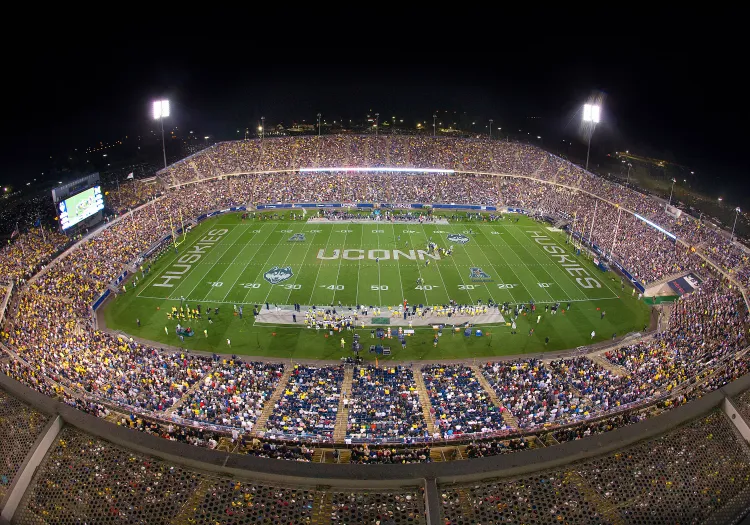How to Pick A National College Football Champion

This is the second part of a two-part series on college sports. The first part is here.
In my last post, I argued that the only honest solution to the crisis in college sports is to treat the Power Four football programs for what they are: commercially viable products that should be spun off as for-profit corporations. This "Tech Transfer" model solves the legal, financial, and moral hypocrisies of the current system.
But it leaves a massive sports question unanswered. If the Big 10 and SEC become a closed shop of professional franchises, what happens to the rest of us? What happens to schools like UConn, or Boise State, or Tulane, who are currently left with their noses pressed against the glass, hoping for an invite to the party?
Currently, the only way to move up in the college football hierarchy is through backroom deal-making, media market analysis, and conference realignment. It is a system based on politics, not play.
If we are going to professionalize the business model, we should also modernize the competitive model. College football needs to stop acting like a cartel and start acting like a meritocracy. It needs to look across the Atlantic to the English football league system.
The Architecture of the "NCFL"
The genius of English soccer is the pyramid. It is a single, unified ecosystem where a team can theoretically rise from the local village pitch to the Champions League based solely on merit. I propose we adapt this for a new "National College Football League (NCFL)."
In this system, the rigid caste system of "Power Four" vs. "Group of Five" vs. "FCS" vanishes. Instead, we have a tiered hierarchy of leagues, united by the thrill of movement between them.
The Premier League: The "Big Four" conferences (SEC, Big 10, Big 12, ACC) would form the top tier. At the outset, their current membership (plus Notre Dame) would be awarded the spots in this premier league.
The Second League: The "Group of Five" (American, Conference USA, MAC, Mountain West, Sun Belt) would form the second tier. To balance the numbers, we might invite the Missouri Valley or Big Sky to round out an even six conferences.
The Lower Leagues: The current FCS conferences (like the CAA and Southern Conference) and the remaining independents would be split among three or four lower leagues based on geography and historical rivalries.
Promotion and Relegation
Here is where the real change happens. In American sports, we are used to static leagues. If you are the worst team in the NFL, you get a high draft pick. You are rewarded for failure.
In the NCFL, we would introduce English-style promotion and relegation.
Each year, each league would hold its own playoff. The two teams that reach the championship game of the Second League playoff would be promoted to the Premier League the following season. Conversely—and this is where the drama lies—the two teams with the worst records in the Premier League would be relegated to the Second League.
The same system would cascade down the line. The finalists of the Third League rise; the cellar-dwellers of the Second League fall.
Suddenly, a late-November game between two 2-8 teams in the Big 10 isn't a meaningless slog; it’s a desperate fight for survival. And a great season by a school like James Madison or Liberty isn't rewarded with a pat on the head and a generic bowl game; it is rewarded with a ticket to the big leagues.
You might ask: What happens to the conferences? In this scenario, the SEC or the Big 10 would lose their standing as legal and managerial overlords. They would no longer be the brokers of TV deals. Instead, the Big Four conferences would become more like the AFC and NFC in the NFL. They would retain their prestige and traditions as the big-time conferences, but they would function simply as mechanisms to organize competition, set regional schedules, and determine seeding for the playoff for the national championship. They become the vessels for rivalry, not the gatekeepers of revenue.
Of course, not every school will want to risk relegation from their historical conference home in the hope of promotion to the "big leagues." Conferences like the Ivy League or the Patriot League (and the teams within them), which have deep historical and institutional ties to one another and to a truly amateur model, could simply opt out. They could choose to participate in the lower tiers of this new system, or they could move their operations to Division III, preserving their traditional rivalries without engaging in the commercial arms race.
A True National Champion
The result would be a system that finally makes sense. The "Tech Transfer" business model allows the universities to profit honestly. The promotion and relegation competitive model allows the athletes to compete fairly.
This system would replace the smoke-filled rooms of conference commissioners with the clarity of the scoreboard. If a school like UConn invests wisely, recruits well, and wins on the field, it would move up. If a traditional power rests on its laurels and mismanages its franchise, it would go down.
This system would yield a true national champion among the entire field of more than 300 Division I football teams. It would be simpler. It would be fairer. And it would be vastly more entertaining to watch.






Member discussion